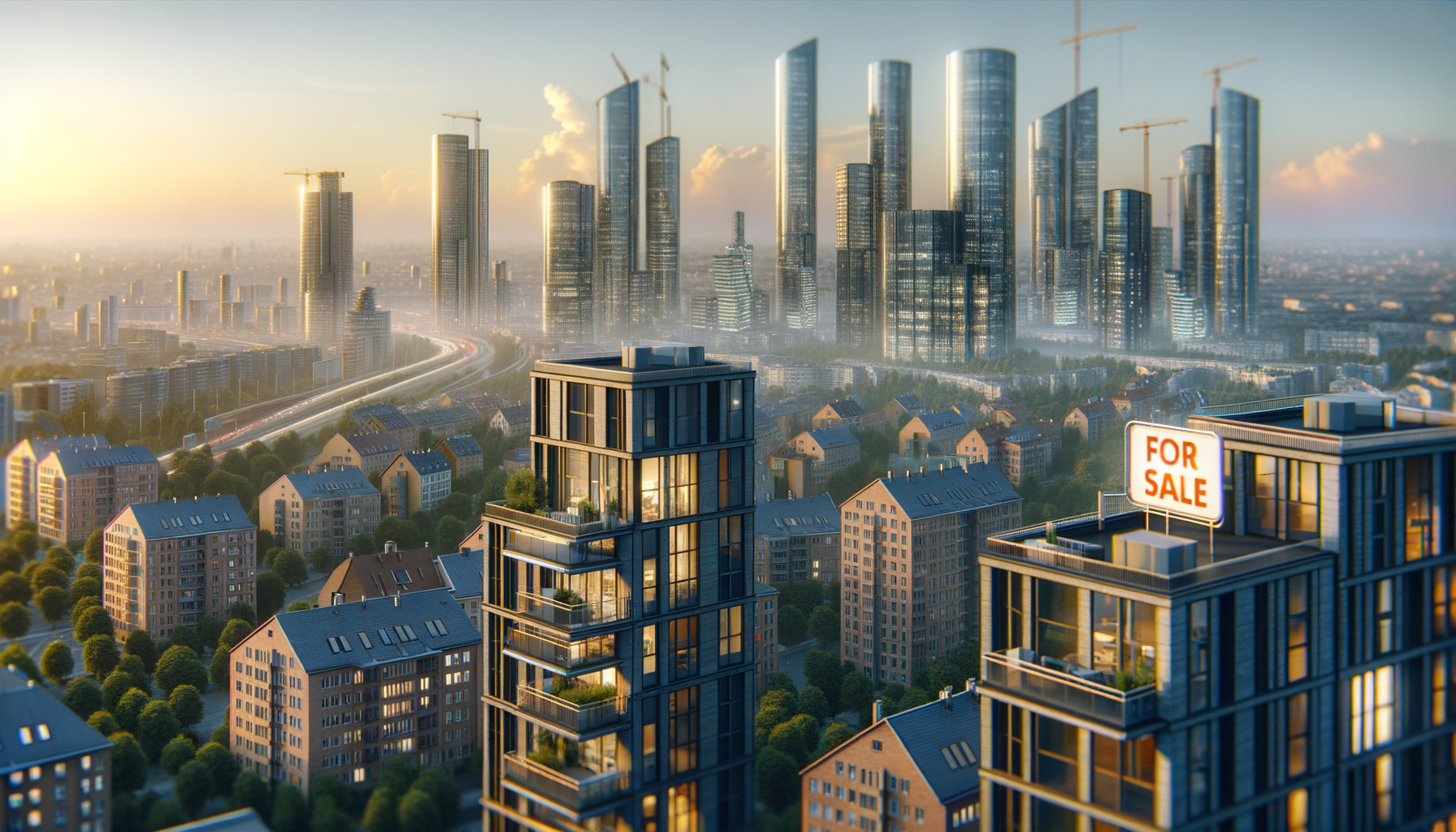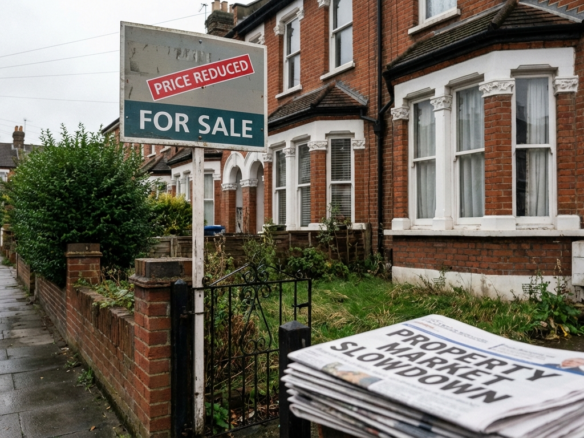The German real estate market continues to navigate through a complex landscape of economic uncertainties and evolving investor sentiment as we reach the midpoint of 2025. Despite facing headwinds from elevated interest rates and geopolitical tensions, the market is showing signs of resilience with selective opportunities emerging across different sectors. This comprehensive analysis examines the current state of Germany’s property market, highlighting key performance indicators, regional variations, and emerging trends that are shaping investment decisions nationwide.
Get 50% OFF!
Subscribe to our newsletter and enjoy a 50% discount on all listing packages, no strings attached!

Understanding the nuanced dynamics of Germany’s real estate ecosystem has become increasingly crucial for investors, developers, and market participants seeking to capitalize on emerging opportunities. From the stabilizing residential markets in major metropolitan areas to the evolving commercial real estate landscape, mid-2025 presents a unique inflection point where strategic positioning and market knowledge can significantly impact investment outcomes.
Market Performance and Key Trends in Mid-2025
The German real estate market has demonstrated remarkable adaptability through the first half of 2025, with transaction volumes showing gradual recovery from the subdued levels experienced in 2024. Investment activity has increased by approximately 15% compared to the same period last year, though it remains below the peak levels witnessed in 2021-2022. This measured recovery reflects growing investor confidence as market participants adjust to the new interest rate environment and develop strategies that align with current economic realities.
Several key trends are reshaping the market landscape, including the accelerated adoption of sustainable building practices and the integration of smart building technologies. Environmental, Social, and Governance (ESG) criteria have become non-negotiable factors in investment decisions, with properties featuring green certifications commanding premium valuations. Additionally, the ongoing digitalization of real estate processes, from property management to tenant services, is creating new value propositions and operational efficiencies that are increasingly valued by both investors and occupiers.
Residential Sector Analysis and Price Dynamics
The residential market has experienced a notable stabilization in pricing dynamics during the first half of 2025, marking a significant shift from the volatility observed in previous years. Average property prices across Germany’s major cities have shown modest growth of 2-3% year-over-year, a stark contrast to the double-digit increases seen during the pandemic era. This moderation reflects a more balanced relationship between supply and demand, with new construction projects gradually coming online and buyer sentiment becoming more measured due to financing costs.
Rental markets continue to demonstrate strength, particularly in tier-one cities where demand consistently outpaces supply. Rental yields have improved marginally as rental prices have maintained upward momentum while purchase prices have stabilized. The Build-to-Rent (BTR) sector has emerged as a particularly attractive investment category, with institutional investors increasingly viewing purpose-built rental developments as a stable income-generating asset class. Government initiatives aimed at increasing affordable housing supply are also creating new investment opportunities, particularly in partnership structures with public sector entities.
Commercial Real Estate Investment Activity
The commercial real estate sector has witnessed a strategic recalibration of investment approaches, with investors becoming increasingly selective about asset quality and location fundamentals. Office markets are experiencing a fundamental transformation driven by hybrid working patterns, leading to a clear bifurcation between premium, well-located assets and secondary properties. Grade-A office buildings in prime locations are maintaining their appeal and rental levels, while older, less flexible spaces face increasing pressure to adapt or risk obsolescence.
Industrial and logistics properties continue to outperform other commercial sectors, driven by the ongoing growth of e-commerce and supply chain optimization requirements. Investment volumes in the logistics sector have increased by over 20% in the first half of 2025, with particular strength in last-mile delivery facilities and temperature-controlled storage solutions. The retail sector is showing signs of stabilization, with investors focusing on dominant shopping centers and retail parks that offer experiential elements beyond traditional shopping. Mixed-use developments that combine retail, office, and residential components are gaining traction as they provide diversified income streams and enhanced resilience against sector-specific challenges.
Regional Market Variations Across German Cities
Germany’s major metropolitan areas continue to exhibit distinct characteristics and performance patterns that reflect their unique economic foundations and demographic trends. Berlin maintains its position as a dynamic growth market, attracting significant investment in both residential and commercial sectors, driven by its status as a technology hub and cultural center. The city’s rental market remains particularly robust, with new developments commanding strong pre-leasing activity and institutional investors showing sustained interest in large-scale residential projects.
Munich and Frankfurt continue to benefit from their economic strength and international connectivity, though price levels have reached points where value-conscious investors are exploring opportunities in secondary cities. Hamburg and Cologne are emerging as attractive alternatives, offering more favorable entry points while maintaining strong fundamentals. The trend toward regional diversification is becoming more pronounced, with cities like Dresden, Leipzig, and Düsseldorf gaining attention for their improving infrastructure, growing populations, and more accessible pricing compared to traditional tier-one markets. This geographic expansion of investment activity is contributing to more balanced regional development and creating new opportunities for value creation.
Outlook and Predictions for Rest of 2025
The remainder of 2025 is expected to bring continued stabilization and selective growth opportunities across Germany’s real estate markets. Market observers anticipate that transaction volumes will continue their gradual recovery, potentially reaching 80-85% of historical average levels by year-end. Interest rate expectations suggest a potential for modest decreases in the latter part of the year, which could provide additional stimulus to market activity and improve financing conditions for both investors and end-users.
Emerging sectors such as data centers, healthcare real estate, and student housing are positioned to benefit from structural demographic and technological trends. The ongoing energy transition is creating investment opportunities in renewable energy infrastructure and energy-efficient building retrofits. Geographic expansion beyond traditional core markets is expected to accelerate, with secondary cities offering attractive risk-adjusted returns. The integration of technology in property operations and the continued emphasis on sustainability will likely become even more pronounced, with these factors increasingly determining asset values and investment attractiveness in an evolving market landscape.
As Germany’s real estate market reaches the midpoint of 2025, the landscape presents a compelling mix of challenges and opportunities that require sophisticated analysis and strategic thinking. The market’s evolution toward greater sustainability, technological integration, and geographic diversification reflects broader economic and social trends that are reshaping how we think about real estate investment and development. While the environment remains complex, with interest rate considerations and geopolitical factors continuing to influence decision-making, the underlying strength of Germany’s economy and the fundamental demand for quality real estate assets provide a solid foundation for continued market development.
Looking ahead to the second half of 2025, success in Germany’s real estate market will increasingly depend on the ability to identify and capitalize on emerging trends while maintaining focus on asset quality and location fundamentals. The market’s maturation process is creating new opportunities for those who can navigate its complexities, suggesting that despite current challenges, Germany’s real estate sector remains well-positioned for sustainable growth and value creation in the years to come.





Join The Discussion